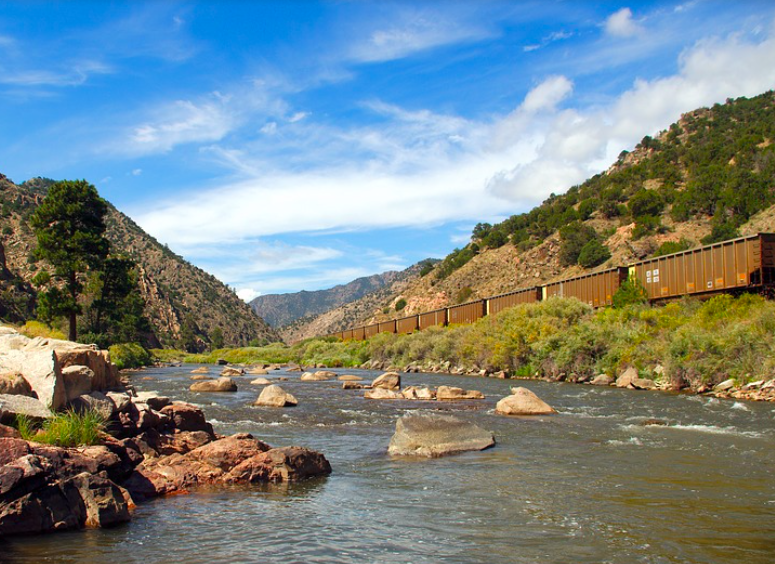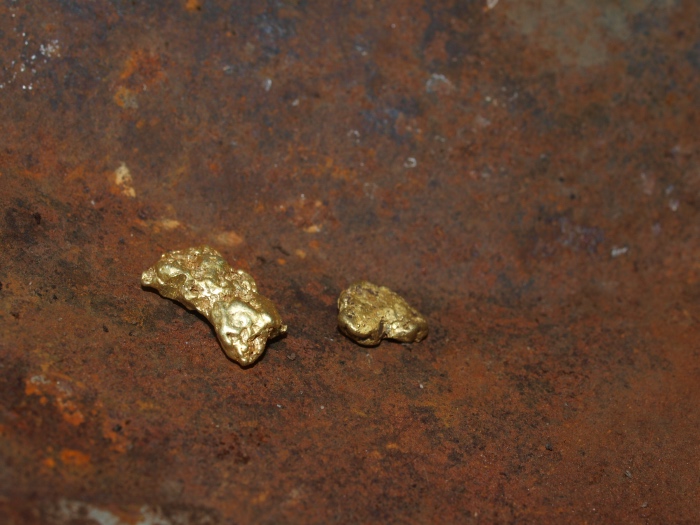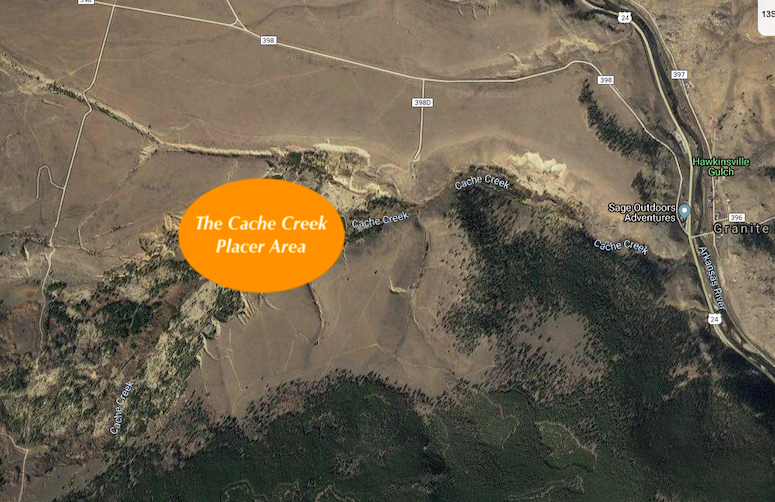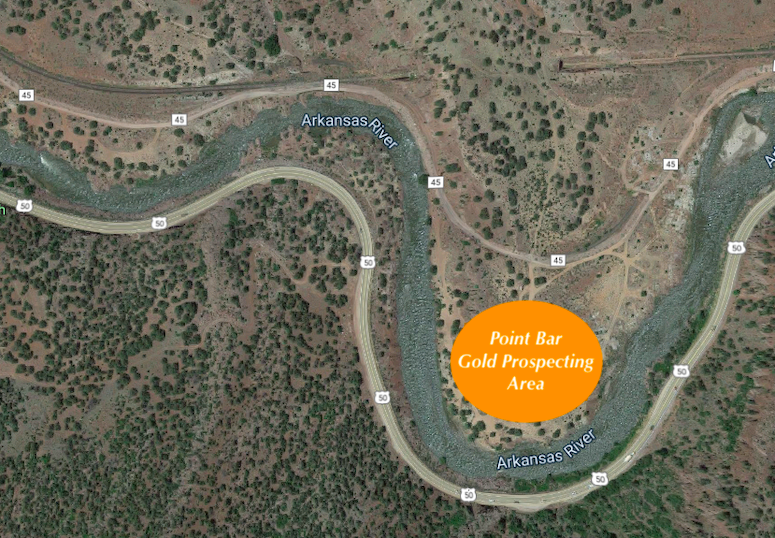
The Arkansas River finds its origin from the Rocky Mountains, takes a long route starting in the Colorado high country. It is one of the major tributaries of the Mississippi River. This tributary traverses four major states of America. Oklahoma and Kansas are bracketed by the state of Colorado where the river begins and Arkansas where the river finds its resting place.
The course of time has changed the hydrography and nature of the river, but it has been providing as a home for people for ages. The earliest settlers along the river were more interested in farming and homesteading than gold.
In the lower reaches of the river that flows through Kansas, Oklahoma, and Arkansas there is very little gold. What is present down here is tiny little specks that won’t amount too much. In this article, we are going to focus on the rich gold-bearing parts of the Arkansas River that flow through the state of Colorado.
Early Gold Strikes at Leadville
Rocks and minerals of the Arkansas River are of mixed variety. Since the sedimentation and fossil formation of the river began ages ago, we find several minerals, precious and semi-precious gemstones there.
The first discovery here is believed to have been made in the 16th century. Spanish explorers traveling through Colorado happened upon this river in the 1500s. They likely found small quantities of gold, but the limited occurrences were not enough to garner much interest.
A small amount of gold was again discovered in 1859 by some prospectors near Leadville. This was the mineral strike that really brought attention to the Arkansas River. Thousands of hopeful miners converged on the area. The first settlement was called Oro City and had a population over 5000 by 1860.
The early placer miners that sluiced the waters around Leadville noted that there were abundant black sands, enough to clog up the riffles of their sluice boxes and make gold recovery challenging. It took many years before they realized that this black sand was actually a lead ore, very high in silver content. The rich silver/lead deposits are what really put Leadville on the map.
The richest gold deposits along the Arkansas River were depleted within a few seasons, and after the discovery of silver it was all but forgotten as the major silver mines were developed. The miners who remained in Leadville worked underground in the rich lode mines in the surrounding mountains.

Cache Creek (just south of Leadville)
The Cache Creek access is a large area that was acquired by the Bureau of Land Management (BLM) in 1992. It is the site of an old hydraulic gold mine, and there is still plenty of gold here waiting to be found. The access includes several miles along Cache Creek and smaller unnamed tributaries that are also worthwhile for prospecting.
The concentrations of gold at Cache Creek are thought to be concentrated in this area from glacial melt from past ice ages. Terminal moraines formed which held rich concentrations of gold. The paying gravels were deep which is why hydraulic mining was the best method for early mining operations. The hydraulic pit that they left behind is clearly evident. There is good gold here!

Cache Creek is the site of an old hydraulic gold mining operation. It was once private lands, but has since been acquired by the BLM and set aside for public access. It offers an excellent opportunity for small-scale prospecting activities. It is easily accessible just west of Granite, Colorado.
There are a few rules to keep in mind at Cache Creek:
Basically this is considered a “recreational mining” area, so don’t expect to go in with big equipment and strike it rich. However, it is still a great area to do a bit of digging and you can find some good gold here if you put in the time.
Also Read: You Can Still Find Gold at Old Hydraulic Mine Sites
Point Bar Gold Prospecting Access
Point Bar is a popular BLM access for gold prospectors in Colorado. It is about 1 hour south of Leadville and 8 miles south of Salida along Highway 50. There are numerous active mining claims in this area, but a 37-acre section of land at Point Bar has been set aside for public use. This is a great area to search for gold on the Arkansas River.
The gold here is consistently small. You will be hard-pressed to find a nugget here. In fact, even a small “picker” is a real treasure here, as most of what you can expect is tiny gold dust. You can certainly recover it by panning and sluicing, but if you are serious about fine gold recovery I would suggest you pick up a Gold Cube. Most prospectors that have to contend with fine gold are gravitating toward this amazing piece of mining gear.
There are lots of private mining claims surrounding Point Bar BLM access, so be sure of where you are before you start digging. The site is large enough that there is plenty of open ground that you can explore. If you want to access more available ground, you might be interested in joining one of several gold prospecting clubs that hold claims in this area.

The Point Bar Access is located between Howard and Wellsville on the north side of the Arkansas River across from Highway 50. There is relatively easy access to this area by crossing the bridge at Wellsville and following the road down the Arkansas River for about 2 miles.
Prospecting Clubs and Other Access Opportunities
There is an abundance of public lands that are wide open for gold prospecting. These are usually the lands managed by the federal government, both Forest Service and BLM. There are upsides and downsides to all this public land when it comes to mining…
The upside of course is that most federal lands are open to prospecting. This is great if the land is unclaimed, but if you are a new prospector you are soon going to find that most of the best looking areas are already claimed. This is the “downside” to public land prospecting… for the average prospector you won’t be able to access most of the best areas without permission from the claim owner. That is what makes public sites like Cache Creek and Point Bar so appealing.
However, there are many very good claims that are held by prospecting clubs. The primary purpose of these clubs is to provide shared access to quality gold claims. There most well-known is the Gold Prospectors Association of America, a national club. There are several other local clubs that have access.
To see if they are a good option to join you will want to contact them and see if they have any claims in areas that you want to prospect. Depending on where you are located in Colorado you may decide that joining one of these clubs is a good idea. The cost is usually quite affordable.
More about Mining in Colorado:
Mining in Colorado | Richest Counties for Gold Prospecting
Colorado’s Smuggler Mine and the Historic Silver Discovery
How Placer Gold is Deposited in Creeks and Rivers
